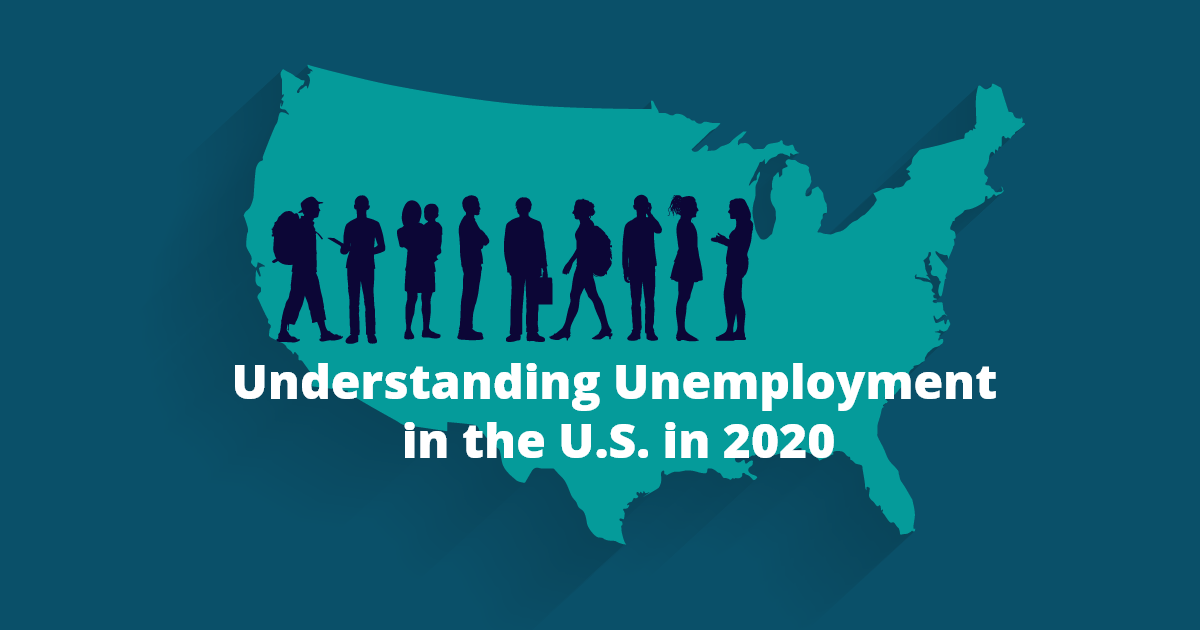
Understanding Unemployment in the U.S. in 2020
It's happening across the country. The numbers can be shocking. The stress, unbelievable. Unemployment. It's easy to get sucked into a cycle of rumors, anxiety and avoidance. So let's face the facts together, shall we?
Unemployment hit historic highs in the spring of 2020. It's WAY worse than 2019 (32x worse, in fact), and it's even worse than the Great Recession. For the week ending March 28, 2020, the number of people filing for unemployment for the first time surged to almost 6.8 million people, compared with 211,000 in 2019. And unemployment numbers in April 2020 doubled what they were at the highest levels during the Great Recession that followed the 2008 financial crisis.
To help with all of this scariness, the government doubled down on paying unemployment benefits. Nearly $32.5 billion were paid in unemployment benefits in April 2020, which is almost 15 times the $2.2 billion paid during the same timeframe in 2019. And 52% of those benefits were paid out on Mondays or Tuesdays. Plus, with the $600 per week supplemental payment, many people receive 2.5x more in 2020 than they did in 2019—and that doesn’t even include the stimulus check!
Even though economic difficulties are widespread in 2020, some states are faring worse than others. By May 2, 2020, the number of unemployed people reached into the millions in eight states. But the labor forces in Kentucky, Georgia, and Hawaii were the hardest hit. During the week ending March 14, 2020, 0.2% or less of their labor forces had filed initial UI claims. But that percentage increased dramatically to almost 5% each week for the next seven weeks, reaching over a third of their labor forces by May 2.
If you’re a visual person, check out the infographic below to understand unemployment in the U.S. in 2020.

Sources:
1Employment and Training Staff. (n.d.). Office of Unemployment Insurance UI Weekly Claims. Retrieved from Employment and Training Administration, U.S. Department of Labor: https://oui.doleta.gov/unemploy/claims_arch.asp
2Lambert, L. (2020, April 23). Real unemployment rate soars past 20%--and the U.S. has now lost 26.5 million jobs. Retrieved from Fortune: https://fortune.com/2020/04/23/us-unemployment-rate-numbers-claims-this-week-total-job-losses-april-23-2020-benefits-claims/
3Bureau of the Fiscal Service Staff. (n.d.). Daily Treasury Statement. Retrieved from Bureau of the Fiscal Service, U.S. Department of the Treasury: https://fsapps.fiscal.treasury.gov/dts/issues
4Iacurci, G. (2020, April 10). How much unemployment will I get? That depends on your state. Retrieved from CNBC: https://www.cnbc.com/2020/04/09/how-much-unemployment-will-i-get-that-depends-on-your-state.html
5Kandra, J. and Wolfe, J. (2020, May 8). Updated state unemployment numbers. Retrieved from Economic Policy Institute: https://www.epi.org/blog/updated-state-unemployment-numbers-large-shares-of-the-labor-force-have-filed-for-unemployment-in-every-state/
6Fitch Ratings Staff. (2020, May 7). Coronavirus Causing Dramatic Differences in State Unemployment. Retrieved from Fitch Ratings: https://www.fitchratings.com/research/us-public-finance/coronavirus-causing-dramatic-differences-in-state-unemployment-07-05-2020


